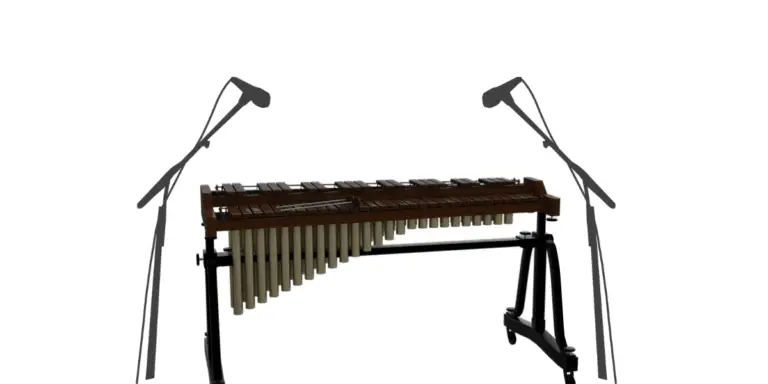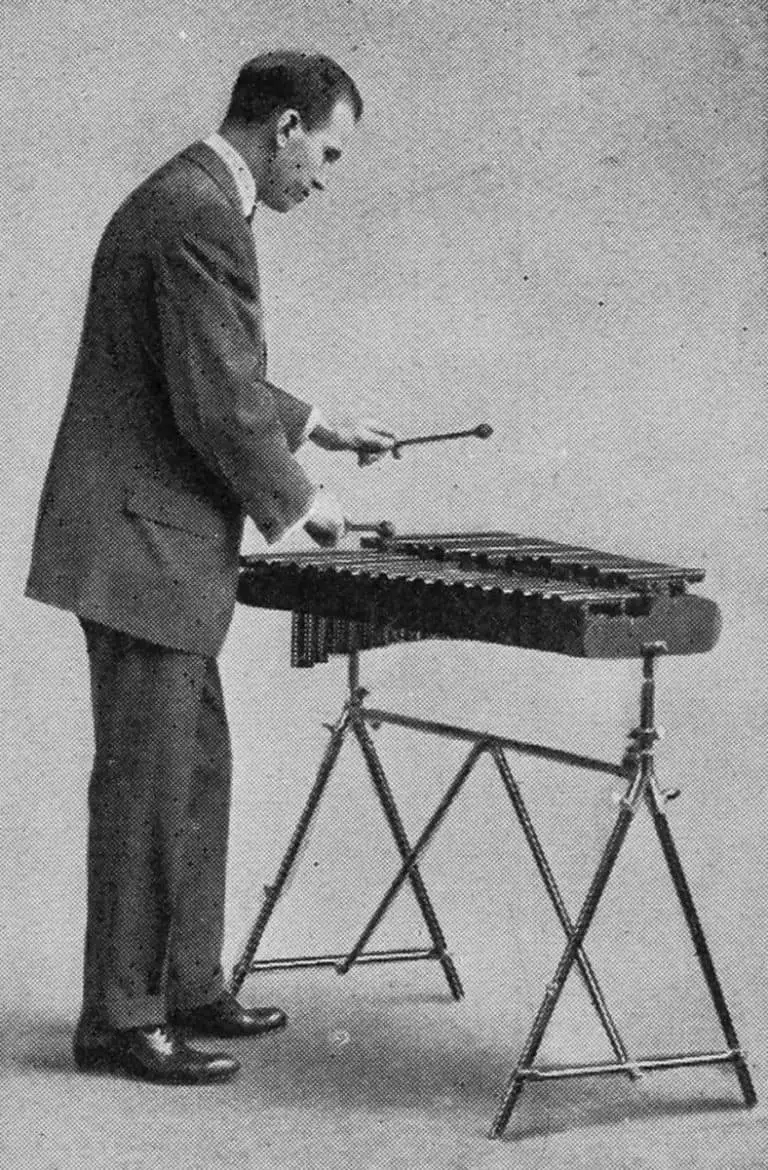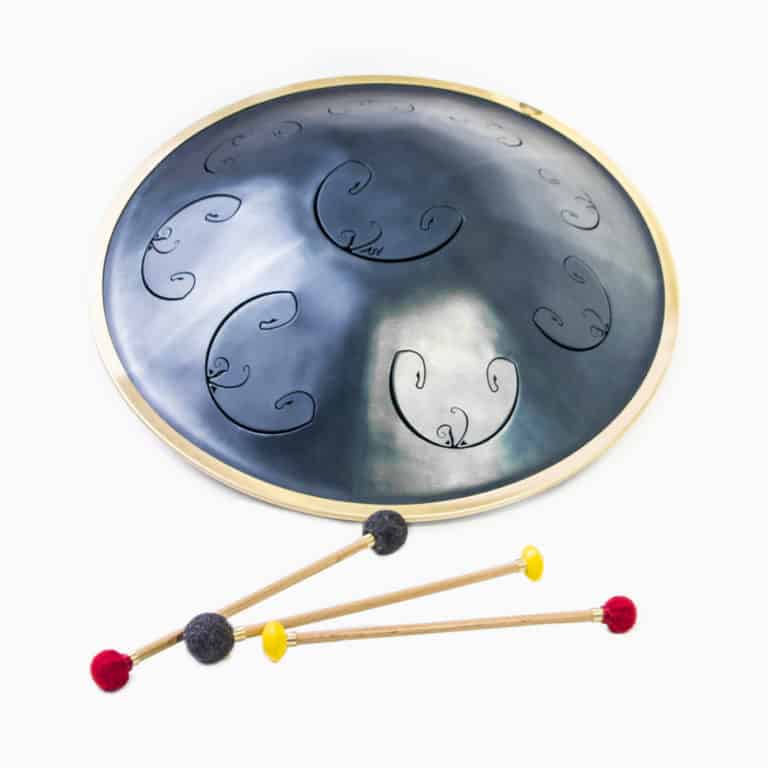What is a Marimba? | History and Info
This is a complete guide to the musical instrument known as a Marimba, including how it looks like but is very different from a xylophone.
What is a Marimba? – A Marimba is a percussion instrument of African origin popularized in Central American. It consists of a set of wooden bars of differing lengths [and pitch]. It is played with mallets whilst resonators or pipes underneath the bars create the amplification of the notes played.
I first discovered the marimba when looking for information on xylophones and glockenspiels. Suddenly my focus was turned to this new instrument, with a very different sound, that I had previously not heard of.
Read on to follow my discovery of the marimba, what is it, what it does, how much they cost and where you can buy one.
What Does the Marimba Look Like?
The marimba looks similar to another instrument that you might be aware of. That Being a xylophone or Glockenspiel. Indeed, I was unaware of a Marimba until looking at the previous two instruments. What drew me to the Marimba was both the impressive look of the resonators beneath the bars and the sound which was quite different altogether.
The marimba is very often much larger, and in some cases, so large that up to four players can play a single instrument together. Furthermore, a player will often use four mallets at the same time, two in each hand, to be able to strike up to four notes simultaneously.
The marimba is an impressive looking instrument. On a stand, and hopefully, on wheels for easier transport, the tubes, or resonators, that sit directly beneath the wooden bars resemble what you might recognize as a church organ.
What are the parts of a Marimba? – The main parts of the Marimba are the frame and legs, [the marimba is played standing up], and then the tone plates, the resonator pipes, and finally the bar suspension cord.
What is a Marimba Made Of?
The frame and legs can be wooden, but most often will be found to be metal or synthetic. The tone plates or bars are always of wooden construction and the resonator pipes metal.
Resonator Pipes
The resonator pipes are clearly seen below the tone plates on a Marimba. They are hollow with the open end immediately below the bars. The far end of the pipe is closed off. This is what creates the resonance as the air inside the pipe vibrates and amplifies the sound.
As you can see in the images below, the marimba can often have a different look, affected mostly by the way the resonator pipes are arranged.
Not all resonator pipes are in use – Some are there purely for decorative purposes and to fill gaps between where tone plates are not placed above.
The higher the note, the shorter the pipe, the lower the note, the longer.
They may go short to long from left to right and reflect the different pitches of the tone plates. The eye and the brain accept this as the expected look and might not think twice about it
The same can not be said when spotting a Marimba with a symmetric arch configuration of resonator pipes. One might think that the notes are now set out in an untraditional way but that would be incorrect. When a Marimba is seen like this, the resonator pipes have been constructed for aesthetics only, and the inside of the pipes are cut off at the correct point for the note resonance they are amplifying
Marimba Tone Plates
The rich sound of the Marimba is created with the addition of the resonator pipes but the sound is born in the tone plates that sit above them.
These are made of wood and the pitch is created by one of two methods or a combination of both
Tone Plate Length
Bars are cut to length depending on the required pitch. The shorter the plate, the higher the pitch and the longer the lower. Also, the width of the plate affects the pitch too, and as expected the narrower the higher the wider the lower etc.
Tone Plate Sanding
Another way to affect the pitch of the bars on the Marimba is by sanding the underside of the bar. Whilst this affects the pitch the timbre can also be controlled in this way depending on the position of the sanding and the depth. Consider the more central the sanding the lower the note that will be produced.
The sanding is more than creating the fundamental note that you will see on the score, however. Without going into a too technical explanation, the vibration of the plate across the depth of the depression of the sanded area creates the harmonic overtone.
What does the Marimba Sound Like?
The Marimba has a rich sound, created through the timbre and resonance of the instrument. The tones are much softer than you would find on a xylophone or glockenspiel which are considered harder sounds.
Tuning of a Marimba is a very delicate and exceptionally skilled process, as the grain of the wood means that tow bars of exactly the same length, breadth and depth can sound quite different based on the grain. Add in the succinct differences this creates with sanding in the harmonics and you can see this is neither an exact science nor a job for the faint of heart.
A perfectly tuned Marimba of several octaves is the Everest of percussion tuning. Marimbas can cover up to 6 and a half Octaves!!
Where is a Marimba Used mostly?
The modern use of a marimba can be seen in some contemporary solo performances or as part of Marimba concertos, marching bands, as part of the percussion section of an orchestra or woodwind and brass ensembles.
How Easy or Hard is the Marimba to play?
Just with any instrument, things may seem difficult at first but become easier with practice. You may see a highly skilled player holding four mallets in each hand, playing with a total of eight and you would be right to assume this would be very difficult, NOPE – impossible to do at any early stage of learning.
Picking up the basics with 2 mallets will not be too taxing. You are striking single notes with each mallet and there are some easy and recognizable tunes to get you going.
With dedication and without too high an expectation for speedy progress, to begin with, you will find progression comes at a steady pace if you dedicate a regular period of time each week to learning your way around the marimba, discovering styles and watching some masters at work.
The obvious advice is to begin with two mallets, and once you have found your range and can play throughout the marimba comfortably fining the notes with a degree of instinct then consider learning the technique of adding mallets to each hand.
Watch the video below – How long before you can play with 8 mallets, do you think?
How to Choose a Marimba – Which one is right for me?
There are two main considerations when choosing which Marimba is the one for you. The tone plates and the range. This leads directly to size of instrument, and where you plan to store and how you will transport it as required too. The bigger the more costly of course, so your budget should also be a consideration.
Tone Plates
Rosewood is a traditional material for the plates and most commonly found. Although not incredibly susceptible to environmental changes, FRP or fiber-reinforced plastic is a synthetic option that is unaffected. They are not really that much cheaper so, based on ethical and traditional reasons, my preference is plainly for natural wood.
What Octave Range?
The standard is now considered to be 4 Octaves which offers coverage of most musical requirements. By adding a further seven notes to the lower end, the bass end is improved with 4.5 octaves, whilst the professional standard is 5.
It is possible to find some quite incredible Marimbas with up to 6.5 Octave range. Remember the bigger the range, it is generally accepted the higher the cost of the instrument for obvious reasons.
How much does a Marimba Cost?
Take a seat as I reveal the cost of owning a Marimba. This is not a buying decision one will take lightly
How much does a Marimba Cost? – A Good Marimba is going to cost around $2,5000 at the lower end of the scale and can extend to nearer $30,000 depending on the make, model and size of the instrument. A good, new Marimba is not an impulse buy. Well, not for most people and for a beginner start with a cheaper second-hand model.
Where to buy a Marimba?
I have a couple of recommended products on the Marimba Gear page, one from the bottom end of the market and available on Amazon, and one excellent 5-octave range marimba from Thomann in Germany.
I will provide more detail and information on each there. Click here to visit the Marimba gear page where there are more details on mallets, storage, and transport solutions.
Marimba History
A quick look at the origin, history, and development of the Marimba
Origin
There is no widely accepted origin of the instrument given that claims from several countries to have invented it can not be dispelled.
What we can be fairly certain of however is that it arrived in South and Central America at some point in the 16th century from where it was popularized and developed into the instrument we know today.
The resonators were almost certainly influenced by the gourds used to amplify early xylophones in Africa, and it is easy to see how the development of the tubular pipe resonators of the modern marimba were arrived at given this source.

The gourds were used as resonators on the Early marimbas and tuned to the fundamental of the corresponding tone plate, or ‘key’. These gourd based marimbas can still be found being produced in Africa today.
The early instruments did not have stable tuning, nor did one sound like another given the inconsistency of material used to make them, this is very much the case with the African instruments of today.
Modern marimbas have developed a ‘standard’ of sorts and rosewood is used most frequently for the plates, while, the gourds, once replaced with wooden resonators, are now mostly constructed of metal.
With tuning advances also came the second row of keys. Much like a piano with the shortened black keys, the Marimba offers the full chromatic range.
Marimbas in modern times can be played by more than one player depending on its size, and instruments covering up to six and a half octaves are available, often played by up to three marimbists using perhaps four mallets each allowing a full 12 mallet playing approach!
Related Questions About Marimba
What is a Marimba Player Called?
Someone who plays Marimba is a Marimbist, or quite simply a Marimba Player.
When Marimba rhythms start to play
is a line from the song Sway, which was originally a bolero-mambo song written by Luis Demetrio. The English version was first widely recognized as popular after being recorded in 1954 by Dean Martin.
Are Marimba and Xylophone the same?
Whilst they both belong in the mallet instrument family, they are quite different. The main differences being tuning. A xylophone has a higher and brighter sound given its construction and higher range. A marimba will blend with a woodwind section in an orchestra whereas a xylophone would stand out considerably.
How long are Marimba mallets
On average Marimba Mallets will be between 16 and 17 inches long. It is possible to use and source shorter or longer depending on your preference.
How many bars does a Marimba have?
At the lower end of the scale, the 4-1/3 Octave Soloist Marimba has 52 keys – a 5 Octave model covering has 62
How much does a Marimba weigh?
A good quality soloist marimba will come in at around 110lbs [50kgs], take things up a notch to the jumbo 5 Octave marimbas and a back-breaking 240-250lbs [115kgs] can be expected.






![Best Percussion Instruments For Kids [That you can play too]](https://cdn-0.coolpercussion.com/wp-content/uploads/2020/09/woman-4010110_1920-768x512.jpg)
